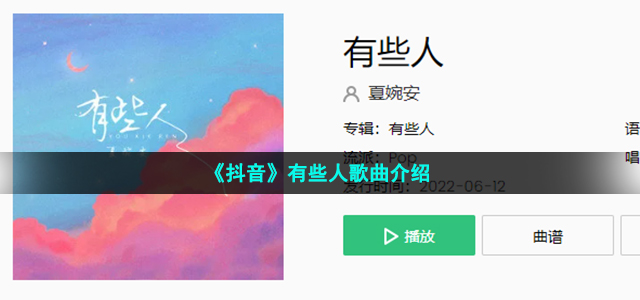/*
* 实现录音机的功能
* 1.在原来的基础上界面更加精简,字体变大使用户更加方便
* 2.在停止录音后便直接保存为.mp3文件
* 3.对停止录音进行改进,将录音按钮设计成类似微信的形式,按下时进行录音,松开即停止录音并保存即可
* 4.在录音的时候在面板上显示音频波,表示正在录音
*/
package com.liuyun.MyRecord6;
import java.awt.*;
import javax.swing.*;
import java.awt.event.*;
import java.io.*;
import javax.sound.sampled.*;
import java.lang.*;
public class MyRecord6 extends JFrame implements MouseListener{
//定义录音格式
AudioFormat af = null;
//定义目标数据行,可以从中读取音频数据,该 TargetDataLine 接口提供从目标数据行的缓冲区读取所捕获数据的方法。
TargetDataLine td = null;
//定义源数据行,源数据行是可以写入数据的数据行。它充当其混频器的源。应用程序将音频字节写入源数据行,这样可处理字节缓冲并将它们传递给混频器。
SourceDataLine sd = null;
//定义字节数组输入输出流
ByteArrayInputStream bais = null;
ByteArrayOutputStream baos = null;
//定义音频输入流
AudioInputStream ais = null;
//定义停止录音的标志,来控制录音线程的运行
Boolean stopflag = false;
//记录开始录音的时间
long startPlay;
//设置一个播放的标志
Boolean playflag;
//每次保存的最后的文件名
File tarFile = null;
//定义音频波形每次显示的字节数
int intBytes = 0;
//定义每次录音的时候每次提取字节来画音频波
byte audioDataBuffer[] = null;
//定义所需要的组件
JPanel jp1,jp2,jp3;
JLabel jl1=null;
JButton captureBtn;
//设置画波形线程的终止的标志
boolean flag = true;
//定义播放录音时的一个计数值
int cnt;
//定义播放录音时一个缓冲数组
byte btsPlay[] = null;
int gridx, gridy, gridwidth, gridheight, anchor, fill, ipadx, ipady;
double weightx, weighty;
Insets inset;
GridBagConstraints c;
public static void main(String[] args) {
//创造一个实例
MyRecord6 mr = new MyRecord6();
}
//构造函数
public MyRecord6()
{
//组件初始化
jp1 = new JPanel();
jp2 = new JPanel();
jp3 = new JPanel();
//定义jp1的字体
Font jpFont = new Font(“华文新魏”,Font.BOLD,40);
jl1 = new JLabel(“请留下您想说的话”);
jl1.setFont(jpFont);
jl1.setForeground(Color.red);
jp1.add(jl1);
//定义按钮上面的字体
Font btFont = new Font(“华文新魏”,Font.BOLD,40);
captureBtn = new JButton(“按住 说话”);
//setForeground可以设置按钮上面字体的颜色
captureBtn.setForeground(Color.RED);
captureBtn.setFont(btFont);
//对开始录音按钮进行鼠标监听
captureBtn.addMouseListener(this);
this.add(jp1,BorderLayout.NORTH);
this.add(jp2,BorderLayout.CENTER);
this.add(jp3,BorderLayout.SOUTH);
GridBagLayout gridbag = null;
jp3.setLayout(gridbag = new GridBagLayout());
gridx=1;
gridy=2;
gridwidth=1;
gridheight=1;
weightx=1;
weighty=1;
anchor=GridBagConstraints.CENTER;
fill=GridBagConstraints.HORIZONTAL;
inset=new Insets(1,1,1,1);
ipadx=0;
ipady=30;
c = new GridBagConstraints(gridx, gridy, gridwidth, gridheight,
weightx, weighty, anchor, fill, inset, ipadx, ipady);
gridbag.setConstraints(captureBtn, c);
jp3.add(captureBtn);
//设置窗口的属性
this.setSize(800,500);
this.setTitle(“录音机”);
this.setDefaultCloseOperation(JFrame.EXIT_ON_CLOSE);
//设置窗口居中
this.setLocationRelativeTo(null);
//将窗口的边框去掉
this.setUndecorated(true);
this.setVisible(true);
//设置窗口上的图标
Image img = this.getToolkit().getImage(getClass().getResource(“/image/Recorder.jpg”));
this.setIconImage(img);
//设置窗口在最前端显示
this.setAlwaysOnTop(true);
}
public void mouseClicked(MouseEvent e) {
}
public void mousePressed(MouseEvent e) {
//当开始录音按钮被按下时就开始录音
if(e.getSource().equals(captureBtn))
{
//改变按钮上面的字的内容
captureBtn.setText(“松开 结束”);
//调用录音的方法
capture();
//记录开始录音的时间
startPlay = System.currentTimeMillis();
}
}
public void mouseReleased(MouseEvent e) {
//当松开录音按钮时停止录音并保存录音的文件
if(e.getSource().equals(captureBtn))
{
//调用停止录音的方法
stop();
//当松开按钮后对显示波形的面板进行清空
jp2.repaint();
//改变按钮上面的字的内容
captureBtn.setText(“按住 说话”);
//调用保存录音的方法
save();
//将其放到指定的路径下
//定义最终要存放的文件路径
String destPath = “D:/Program Files/apache-tomcat-6.0.35/webapps/XWZ/tempFile/”;
copyFile(“D:/”+tarFile.getName(), destPath);
System.exit(0);
}
}
public void mouseEntered(MouseEvent e) {
}
public void mouseExited(MouseEvent e) {
}
//开始录音
public void capture()
{
try {
//af为AudioFormat也就是音频格式
af = getAudioFormat();
DataLine.Info info = new DataLine.Info(TargetDataLine.class,af);
td = (TargetDataLine)(AudioSystem.getLine(info));
//打开具有指定格式的行,这样可使行获得所有所需的系统资源并变得可操作。
td.open(af);
//允许某一数据行执行数据 I/O
td.start();
//启动显示波形的进程
RecordWave aw = new RecordWave();
Thread t2 = new Thread(aw);
t2.start();
//把显示波形的进程标志设为true
flag = true;
Record record = new Record();
Thread t1 = new Thread(record);
t1.start();
} catch (Exception ex) {
ex.printStackTrace();
return;
}
}
//停止录音
public void stop()
{
stopflag = true;
//将画波形的进程终止
flag = false;
}
//保存录音
public void save()
{
af = getAudioFormat();
byte audioData[] = baos.toByteArray();
bais = new ByteArrayInputStream(audioData);
ais = new AudioInputStream(bais,af, audioData.length / af.getFrameSize());
//定义最终保存的文件名
File file = null;
//写入文件
try {
//以当前的时间命名录音的名字
//将录音的文件存放到F盘下语音文件夹下
File filePath = new File(“D:/AudioFile”);
String tarPath = “D:/”;
if(!filePath.exists())
{//如果文件不存在,则创建该目录
filePath.mkdirs();
}
long time = System.currentTimeMillis();
file = new File(filePath+”/”+time+”.wav”);
AudioSystem.write(ais, AudioFileFormat.Type.WAVE, file);
//将录音产生的wav文件转换为容量较小的mp3格式
//定义产生后文件名
tarFile = new File(tarPath+time+”.mp3″);
Runtime run = null;
//测试当前的路径
try {
run = Runtime.getRuntime();
//调用编码器来将wav文件转换为mp3文件
//把编码得到的mp3文件先存放到D盘下,然后利用文件拷贝函数将它放到指定的文件夹下同时将D盘下的文件删除
Process p=run.exec(filePath+”/”+”lame -b 16 “+filePath+”/”+file.getName()+” “+tarPath+tarFile.getName()); //16为码率,可自行修改
//释放进程
p.getOutputStream().close();
p.getInputStream().close();
p.getErrorStream().close();
//等待
p.waitFor();
// //删除之前保存的的wav文件
// if(file.exists())
// {
// file.delete();
// }
// //定义最终要存放的文件路径
// String destPath = “D:/Program Files/apache-tomcat-6.0.35/webapps/XWZ/tempFile/”;
// copyFile(tarPath+tarFile.getName(), destPath);
} catch (Exception e) {
e.printStackTrace();
}finally{
//最后都要执行的语句
//run调用lame解码器最后释放内存
run.freeMemory();
}
} catch (Exception e) {
e.printStackTrace();
}finally{
//关闭流
try {
if(bais != null)
{
bais.close();
}
if(ais != null)
{
ais.close();
}
} catch (Exception e) {
e.printStackTrace();
}
}
}
//文件拷贝方法
public void copyFile(String srcPath , String destPath)
{
File srcFile = new File(srcPath);
//如果目的文件夹没有则创建目的文件夹
(new File(destPath)).mkdirs();
//在目的文件夹下创建要复制的文件
File destFile = new File(destPath+”/”+srcFile.getName());
if(srcFile.isFile() && srcFile.exists())
{
InputStream in = null;
OutputStream out = null;
try {
in = new FileInputStream(srcFile);
out = new FileOutputStream(destFile);
//设置缓冲数组
byte[] buff = new byte[1024*5];
int len = 0;
while ((len = in.read(buff)) != -1)
{
out.write(buff, 0, len);
}
// //测试该函数是否执行
// System.out.println(“ok1”);
} catch(Exception e) {
e.printStackTrace();
}finally{
//关闭流,先开的后关闭
try {
if(out != null)
{
out.close();
}
if(in != null)
{
in.close();
}
} catch (Exception e) {
e.printStackTrace();
}
}
}
//复制过后删除源文件夹中的的文件
if(srcFile.exists())
{
srcFile.delete();
}
}
//设置AudioFormat的参数
public AudioFormat getAudioFormat()
{
//下面注释部分是另外一种音频格式,两者都可以
AudioFormat.Encoding encoding = AudioFormat.Encoding.
PCM_SIGNED ;
float rate = 8000f;
int sampleSize = 16;
String signedString = “signed”;
boolean bigEndian = true;
int channels = 1;
return new AudioFormat(encoding, rate, sampleSize, channels,
(sampleSize / 8) * channels, rate, bigEndian);
// //采样率是每秒播放和录制的样本数
// float sampleRate = 16000.0F;
// // 采样率8000,11025,16000,22050,44100
// //sampleSizeInBits表示每个具有此格式的声音样本中的位数
// int sampleSizeInBits = 16;
// // 8,16
// int channels = 1;
// // 单声道为1,立体声为2
// boolean signed = true;
// // true,false
// boolean bigEndian = true;
// // true,false
// return new AudioFormat(sampleRate, sampleSizeInBits, channels, signed,bigEndian);
}
//录音类,因为要用到MyRecord类中的变量,所以将其做成内部类
class Record implements Runnable
{
//定义存放录音的字节数组,作为缓冲区
byte bts[] = new byte[10000];
//将字节数组包装到流里,最终存入到baos中
//重写run函数
public void run() {
baos = new ByteArrayOutputStream();
try {
stopflag = false;
while(stopflag != true)
{
//当停止录音没按下时,该线程一直执行
//从数据行的输入缓冲区读取音频数据。
//要读取bts.length长度的字节,cnt 是实际读取的字节数
int cnt = td.read(bts, 0, bts.length);
if(cnt > 0)
{
baos.write(bts, 0, cnt);
}
//开始从音频流中读取字节数
byte copyBts[] = bts;
bais = new ByteArrayInputStream(copyBts);
ais = new AudioInputStream(bais, af, copyBts.length/af.getFrameSize());
try{
DataLine.Info dataLineInfo = new DataLine.Info(SourceDataLine.class, af);
sd = (SourceDataLine) AudioSystem.getLine(dataLineInfo);
sd.open(af);
sd.start();
//从音频流中读取
int Buffer_Size = 10000;
audioDataBuffer = new byte[Buffer_Size];
int outBytes;
intBytes = ais.read(audioDataBuffer, 0,audioDataBuffer.length);
// 不写到混频器中这样就不会播放
// if (intBytes >= 0) {
// outBytes = sd.write(audioDataBuffer, 0,audioDataBuffer.length);
// }
}catch (Exception e) {
e.printStackTrace();
}
}
} catch (Exception e) {
e.printStackTrace();
}finally{
try {
//intBytes = -1;
//关闭打开的字节数组流
if(baos != null)
{
baos.close();
}
} catch (Exception e) {
e.printStackTrace();
}finally{
//下面这句td.drain()不能要,这样如果不播放数据就阻塞再次录音会出现其他程序访问错误
//td.drain();
td.close();
//刷新显示波形的面板
jp2.repaint();
}
}
}
}
//画波形的类
//因为要使用一些主函数中的数据,所以做成内部类
class RecordWave extends JPanel implements Runnable
{
//用画笔画出波形
public void paint(Graphics g)
{
super.paint(g);
g.fillRect(jp2.getX(),jp2.getY() , 800, 380);
if( audioDataBuffer != null)
{
g.drawLine(jp2.getWidth() / 256, 700, jp2.getWidth() / 256, 700);
for(int i=0; i
{
g.setColor(Color.RED);
g.drawLine(i * jp2.getWidth() / 256, (int)audioDataBuffer[i]+200 , (i + 1)
* jp2.getWidth() / 256, (int)audioDataBuffer[i+1]+200);
}
}
}
public void run()
{
//刷新波形
while(true)
{
//System.out.println(“ok”);
try {
synchronized (this) {
//隔多长时间获取
Thread.sleep(300);
}
} catch (Exception e) {
e.printStackTrace();
}
this.paint(jp2.getGraphics());
//终止线程
if(flag == false)
{
break;
}
}
}
}
}




0 留言